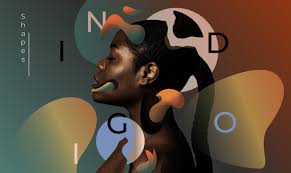The Art of Graphic Designing
Graphic design is a creative and dynamic field that combines art and technology to communicate ideas visually. It involves the use of typography, imagery, color, and layout to create visual compositions that convey messages effectively. Graphic designers play a crucial role in shaping the visual identity of brands, products, publications, and more.
One of the key aspects of graphic design is understanding the principles of design, such as balance, contrast, emphasis, rhythm, and unity. These principles guide designers in creating visually appealing and cohesive designs that capture the viewer’s attention and communicate the intended message.
Graphic designers work with various tools and software to bring their ideas to life. Adobe Creative Suite, including Photoshop, Illustrator, and InDesign, is commonly used in the industry for creating digital designs. From designing logos and branding materials to creating marketing collateral and website layouts, graphic designers have a wide range of applications for their skills.
In addition to technical skills, successful graphic designers possess creativity, problem-solving abilities, attention to detail, and a keen eye for aesthetics. They must be able to understand client requirements, target audience preferences, and industry trends to produce designs that resonate with viewers.
With the rise of digital media and online platforms, the demand for skilled graphic designers continues to grow. Businesses rely on compelling visuals to stand out in a crowded marketplace and connect with their audiences effectively. Whether it’s designing social media graphics or developing user-friendly interfaces for websites and apps, graphic designers play a crucial role in shaping modern communication.
In conclusion, graphic designing is not just about creating visually appealing images; it’s about telling stories, conveying emotions, and engaging audiences through thoughtful design choices. As technology advances and design trends evolve, graphic designers remain at the forefront of visual communication innovation.
5 Essential Tips for Mastering Graphic Design
- Use a limited color palette to maintain visual consistency.
- Pay attention to typography for better readability and aesthetics.
- Balance elements in your design to create a harmonious composition.
- Utilize white space effectively to enhance focus on key elements.
- Experiment with different textures and patterns to add depth to your designs.
Use a limited color palette to maintain visual consistency.
When it comes to graphic designing, utilizing a limited color palette is a valuable tip to uphold visual consistency. By selecting a harmonious set of colors, designers can create a cohesive and unified look throughout their design work. Limiting the color choices not only helps maintain a sense of balance and order but also enhances the overall aesthetic appeal of the design. Consistency in color usage can strengthen brand identity, improve readability, and guide the viewer’s focus on key elements within the composition. Embracing a restrained color palette demonstrates thoughtful design decision-making and contributes to creating visually impactful and memorable designs.
Pay attention to typography for better readability and aesthetics.
When it comes to graphic designing, paying attention to typography is essential for enhancing both readability and aesthetics. The choice of fonts, spacing, alignment, and font sizes can significantly impact how the text is perceived by the audience. By selecting appropriate typography that complements the overall design, designers can improve the legibility of the content and create a visually appealing layout that enhances the message being conveyed. Typography plays a crucial role in guiding the viewer’s eye, establishing hierarchy, and setting the tone for the design piece. Therefore, giving careful consideration to typography can elevate the quality of a design and make it more engaging and effective.
Balance elements in your design to create a harmonious composition.
When it comes to graphic designing, balancing elements in your design is essential to creating a harmonious composition. By carefully distributing visual elements such as text, images, colors, and white space, you can achieve a sense of equilibrium and unity in your design. Balancing elements helps guide the viewer’s eye through the layout and ensures that no single element overwhelms the others. Whether it’s achieving symmetry or asymmetry, finding the right balance in your design enhances its overall aesthetic appeal and effectiveness in conveying your message clearly.
Utilize white space effectively to enhance focus on key elements.
Utilizing white space effectively is a crucial tip in graphic designing as it helps enhance the focus on key elements within a design. White space, also known as negative space, provides breathing room around elements, allowing them to stand out and capture the viewer’s attention. By strategically incorporating white space in a design, graphic designers can create a sense of balance, clarity, and elegance. This technique not only improves visual hierarchy but also guides the viewer’s eye towards essential information or focal points, ultimately enhancing the overall impact and readability of the design.
Experiment with different textures and patterns to add depth to your designs.
Experimenting with different textures and patterns is a valuable tip in graphic designing as it can add depth and visual interest to your designs. By incorporating textures like wood grain, fabric, or metallic finishes, and patterns such as geometric shapes or organic motifs, you can create a multi-dimensional look that enhances the overall aesthetic appeal of your design. These elements not only provide tactile sensations but also help create a sense of richness and complexity, making your designs more engaging and memorable to viewers.

